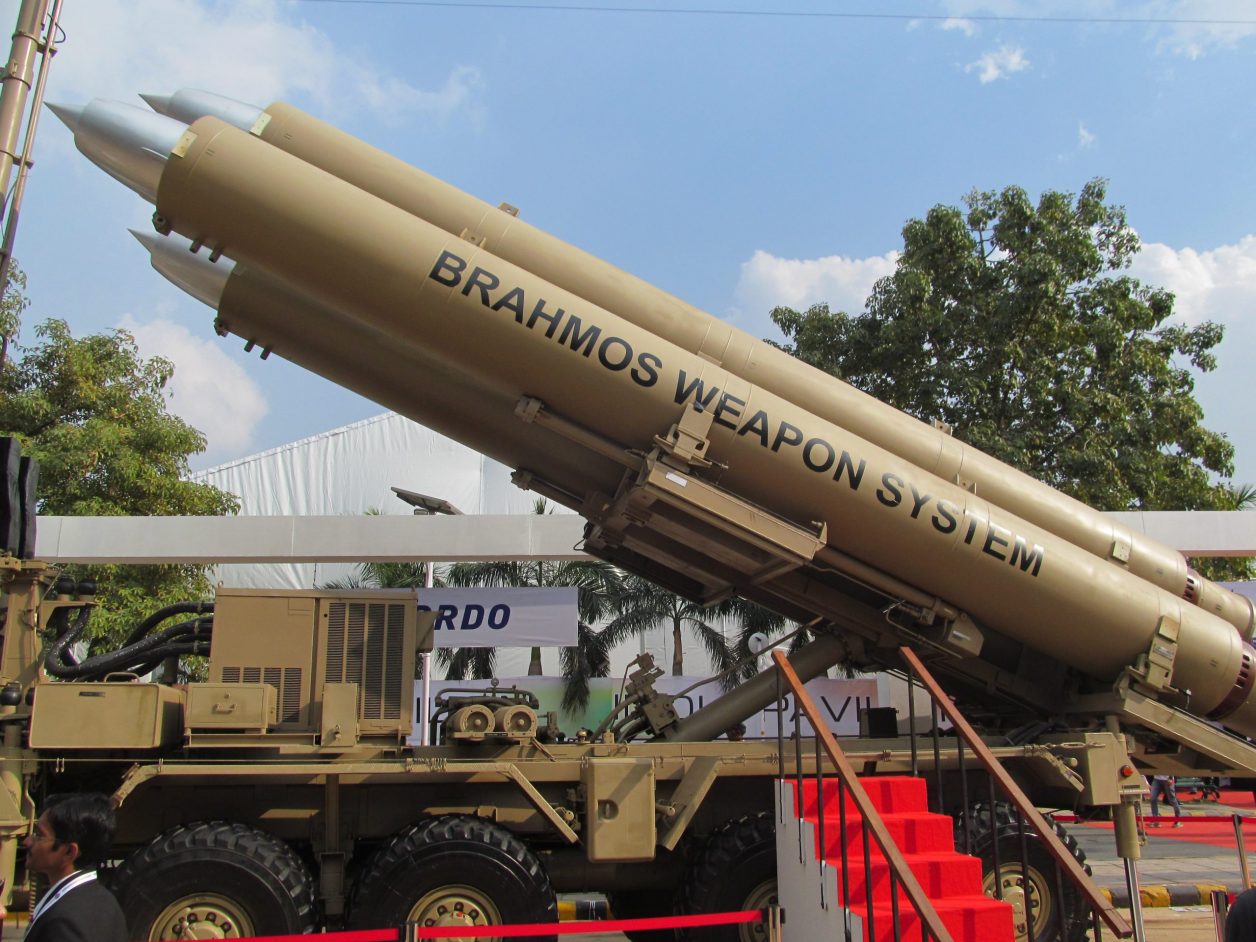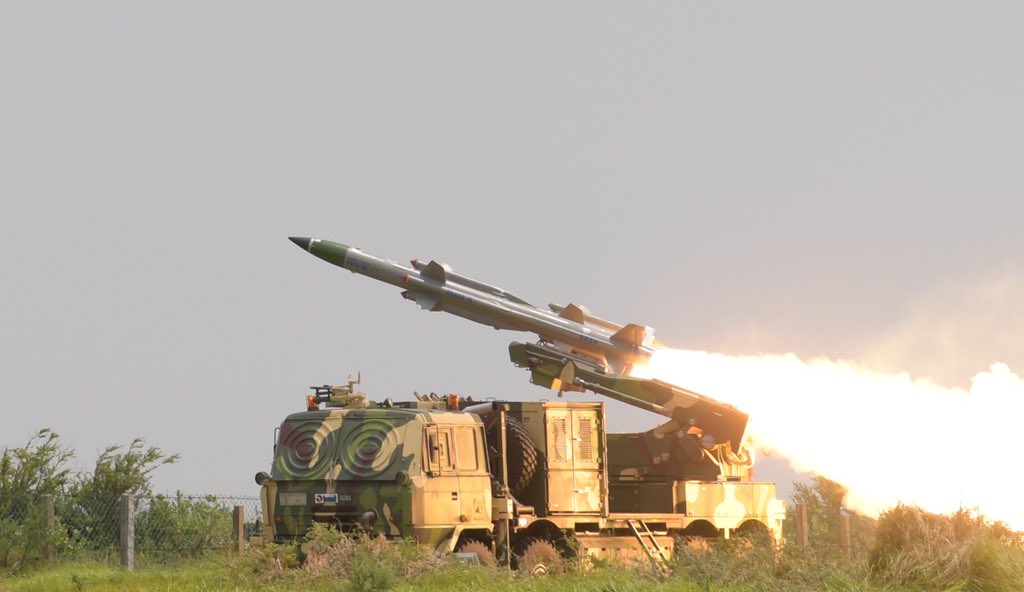The Philipines recently became the first customer of Indo-Russian BrahMos missiles. Experts say BrahMos could just be the beginning as India looks to export other powerful missiles to ally nations.
India’s Ministry of Defense (MOD) had informed the country’s Parliament last year that it had clocked a massive hike in the export of military equipment in the past five years.
MOD also announced that the government has set an ambitious goal of exporting aerospace and defense equipment and services worth around 35,000 crores (approx $5 billion) by 2025.
While this may sound too optimistic for a country that has traditionally been a large defense importer, there are a few policy decisions that may be indicative of a changing trend.
The proposal of BRAHMOS AEROSPACE PRIVATE LTD. for the Shore-Based Anti-Ship Missile System Acquisition Project for the #PhilippineNavy, with a corresponding price proposal in the amount of USD 374,962,800 has been accepted. pic.twitter.com/5zdNtZap9q
— Defence Decode® (@DefenceDecode) January 13, 2022
In what could be the first major defense export deal for India, the Philippines accepted BrahMos Aerospace’s proposal to supply supersonic cruise missiles to its navy on January 14. This has essentially put all speculations to rest about the BrahMos missile contract that has been a topic of discussion on both sides for quite some time.
The $374.9 million agreement was announced via a ‘Notice of Award’ signed by Secretary Delfin Lorenzana of the Philippines Department of National Defense. The order instructed BrahMos Aerospace to deliver the Shore-based Anti-ship Missile System within 10 calendar days of receiving it. BrahMos Aerospace is a joint venture between India and Russia.
On January 11, the Indian Navy’s newly commissioned INS Visakhapatnam successfully test-fired a long-range sea-to-sea variant of the BrahMos missile. The test was carried out by the Defence Research and Development Organisation (DRDO), as previously reported by EurAsian Times.

BrahMos, which was first deployed on Navy warships in 2005, has the capability to hit targets at sea that are beyond the radar horizon. This naval version of the missile can be fired vertically or horizontally from moving or stationary assets, and it can hit both land and water targets.
New Delhi and Manila have been in talks to buy a variety of Indian defense platforms, including the BrahMos missile, then-Indian ambassador to the Philippines, Jaideep Majumdar had said in 2020.
The current agreement with the Philippines is part of India’s ‘Made-in-India’ defense weapons effort. The claimed order would be the country’s largest in the field, even as India last year had won a $40 million deal for the DRDO-developed weapon locating radar systems from the Armenian government.
Apart from the Philippines, many Southeast Asian countries, including Thailand, Indonesia, and Vietnam, have expressed interest in the land and sea-based variants of BrahMos, according to reports. Argentina, Brazil, South Africa, the United Arab Emirates, and Saudi Arabia are also among the potential customers.
Other Missiles For Potential Export
Apart from BrahMos for the Philippines Navy, there are other made-in-India missiles that have also found popularity outside the country and remain on the export list of the Indian government.
Akash Surface-To-Air Missile
The Narendra Modi government had approved the export of the Akash surface-to-air missile system, which was developed in India. If media reports are anything to go by, at least a dozen nations including the United Arab Emirates, Vietnam, and the Philippines, have expressed interest in purchasing the Akash system.
The Government’s approval will enable Indian manufacturers to participate in contracts issued by various countries, as previously stated by The Hindu.

Akash has a range of 25 kilometers and can engage several targets at the same time in all weather conditions. With over 96 percent indigenization, Akash is the country’s one of most important missiles. The Akash surface-to-air missile was inducted into the Indian Air Force (IAF) in 2014 and the Army in 2015.
Earlier, the Akash missile was given clearance for exports by the Indian government but now other missiles have also been added to the list.
Astra Air-To-Air Missile
The Astra air-to-air missile is India’s first beyond-visual-range (BVR) missile, conceived and developed by the Defence Research and Development Organisation (DRDO).
With exceptional maneuverability and supersonic speeds, it is designed to engage and destroy aerial targets. The sophisticated air combat capabilities of the missile enable it to engage multiple high-performance targets.

The Indian Air Force (IAF) and the Indian Navy are the primary users of the Astra missile. It has been incorporated with the Su-30MKI fighter jet of the Indian Air Force. The Mk-II model, which would have a range of 160 kilometers, is also being developed by DRDO. India and Russia are working together to create the Astra Mk-III, a future model.
Nag & Pinaka
Nag is a third-generation anti-tank guided missile developed by DRDO to support the Indian Army’s mechanized infantry and airborne forces.
Nag can be launched from both the ground and the air. It has been designed to take out current main battle tanks and other heavily defended targets. The Nag missile system, which is launched from a Nag Missile Carrier (NAMICA), has a range of 4 to 7 kilometers and is equipped with an advanced seeker to help it find its target.
The final test of the Nag anti-tank guided missile was successfully completed in 2020, and the weapon system is now ready for induction into the Indian Army.
The Nag missile was developed in India as part of the Indian Ministry of Defense’s Integrated Guided Missile Development Program (IGMDP), which also included the Agni, Akash, Trishul, and Prithvi missiles.
Pinaka is a multiple rocket launcher designed for the Indian Army by the Defence Research and Development Organisation (DRDO). For mobility, the system is installed on a Tatra truck.
Previously, the army had relied on the Pinaka Mark I, which had a range of 37.5 kilometers. Last year, the army successfully tested the Pinaka Extended Range (Pinaka-ER) Multiple Launch Rocket System (MLRS), one of the army’s most potent fire support systems, with rockets built by private companies.
Enhanced Pinaka has a range of 75 kilometers; it has the “ability to strike within 10 meters of where it is aimed, allowing the army to destroy a terrorist camp, or an enemy post, logistics dump or headquarters, without needing to send soldiers across the border,” wrote Ajai Shukla, a defense analyst.
Barak 8 Missile
Barak 8 missile developed jointly by Israel and India could also be exported on the same lines as the BrahMos.
The Barak-8 is said to be capable of countering airborne threats from distances of up to 70 kilometers. It was the result of a joint effort between India’s Defence Research and Development Organization (DRDO) and Israel’s Aerospace Industry (IAI).

Israeli company Rafael, India’s state-run Bharat Electronics Limited (BEL), Bharat Dynamics Limited, and private enterprise Larsen and Toubro were also important stakeholders (L&T).
Radars, command and control systems, and mobile launchers are all part of the Barak-8. For excellent maneuverability in the terminal phase, the air defense system’s missiles are powered by an indigenous rocket motor and control system.
Further, India’s sale of LCA Tejas to friendly countries which remain in the works could also ignite interest in missiles that could be integrated with this Light Combat Aircraft for various countries.
In 2020, the Modi government had set a goal for the Indian defense industry to export $5 billion by 2025. A renewed push towards indigenous manufacturing and diplomatic outreach could mean India will be in the position to export more missiles and other weapon systems to friendly countries.
- Contact the author at sakshi.tiwari9555@gmail.com
- Follow EurAsian Times on Google News




